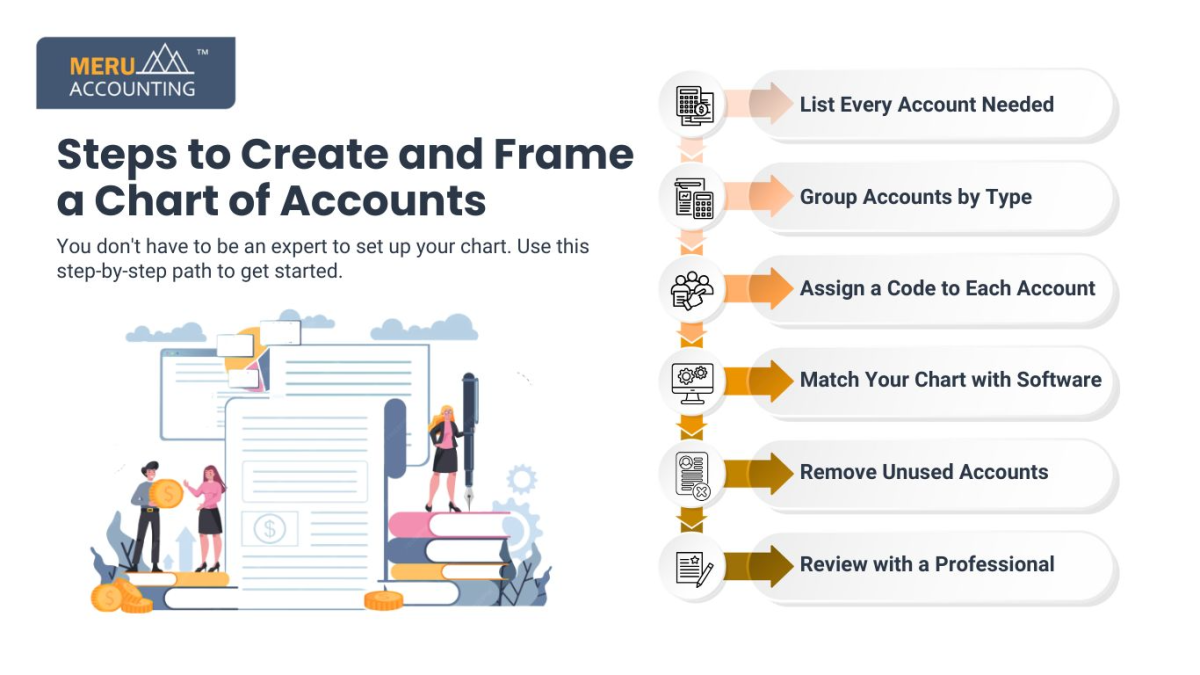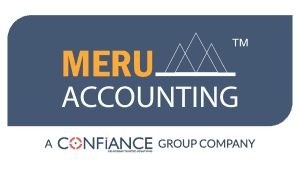Framing Chart of Accounts: A Simple Guide for Better Tracking
Building a solid financial base starts with setting up the right records. One key step is creating a framing chart of accounts that is clear and easy to use. This helps track income, spending, and balance sheet items. When the accounts are well-framed, it becomes easy to check where the money comes from and where it goes. In this blog, we’ll walk through the full process of framing a chart of accounts and how it helps both small and large businesses keep things simple and clean. We’ll also see how tools like a film framing chart help with layout and meaning.
Introduction to the Chart of Accounts
A chart of accounts is a list of all the accounts used by a business. These accounts are sorted to show where the money flows in and out. It includes things like income, costs, assets, and debts.
Why It Matters
- Helps keep records in order.
- Makes reports clear and useful.
- Supports planning and spending.
- Useful for tax and audits.
- Builds trust with investors and lenders.
What Does Framing a Chart of Accounts Mean?
Framing a chart of accounts means setting up each account in a way that fits your business. You build it to match your needs and the kind of work you do.
Main Points in Framing
- You choose the number codes for each account.
- You sort accounts into groups like assets or income.
- You match your account titles to how your team talks.
- You avoid unused or unclear accounts.
- You make sure it fits your system or software.
Key Elements in a Well-Framed Chart of Accounts
A clean chart must be clear and smart. A poor setup can cause stress and wrong reports.
Core Parts to Include
- Assets: Things you own—cash, tools, stocks.
- Liabilities: What you owe—loans, taxes, or bills.
- Income: Money you earn—sales or other gains.
- Expenses: What you spend—rent, wages, or fuel.
- Equity: The part you own in the business.
Tips for Good Framing
- Use a code system (e.g., 1000s for assets).
- Keep names short and easy to read.
- Group items by type or use.
- Match tax and legal rules.
- Stay consistent each year.
Importance of Framing Better Charts of Accounts
- Charts of accounts are a listing of all the accounts in such an order that they help in making financial reports efficiently and easily. Accounts are allocated with a specific code so that tracing can be done without hindrance. We can choose the format and other information for the Charts of Accounts after deciding the priority of the report that needs to be made using that content.
- We get better reports if the Charts of Accounts are made properly. Generally, the COA (Charts of Accounts) contains the account name, account code, and a brief description. COA serves as a base for a business’s record-keeping. It creates a logical flow that helps to see and analyze the information filled in the COA. A carefully built Chart of Accounts provides not only the information but also helps a company to manage with financial reporting standards.
- But before all this, setting up the priority is needed. So, if you want to make a report regarding Payroll, then create your COA according to that. Make separate accounts for different subcategories like wages, bonus, repairing, health insurance, etc., give each account a proper code, and select a category for them. In this case of Payroll, it is the expensive one.
- Like Payroll, there can be different scopes of business like Cash account, Purchase or Sale accounts, and much more. So, first, select one core account, and according to that, scrutinize what other sub-accounts would be for preparing the report. It will also help in knowing what basic information is needed at the time of data entry. The more precise the Charts of Accounts, the more sufficient and accurate the information it will deliver. It will eventually result in the ease of getting better reports in your hand at the end.
Steps to Create and Frame a Chart of Accounts
You don’t have to be an expert to set up your chart. Use this step-by-step path to get started.
Step 1: List Every Account Needed
Start by noting down all the accounts your business will use. Think about income, costs, assets, and debts. A complete list builds a strong foundation for all financial tracking.
Step 2: Group Accounts by Type
Group each account into key types like revenue, expenses, liabilities, or assets. This helps when reading reports and keeps things neat and structured for everyone on your team.
Step 3: Assign a Code to Each Account
Give each account a short numeric or alpha code. This makes data entry easier and ensures you can sort or pull reports by account type with ease.

Step 4: Match Your Chart with Software
Make sure your account setup aligns with your accounting software. This reduces sync issues and ensures smooth data input and export during reporting and tax time.
Step 5: Remove Unused Accounts
Trim out any extra or unused accounts. Too many accounts clutter the chart and cause confusion. Keep only those accounts that serve your business purpose.
Step 6: Review with a Professional
Before you begin using your chart, get it reviewed by an accounting expert. They can catch errors, suggest changes, and help you avoid costly reporting problems later.
Framing the chart of accounts the right way means fewer mistakes and better reports that support smart financial decisions.
Common Mistakes in Framing Charts of Accounts and How to Avoid Them
Even simple charts can go wrong. Watch out for these usual errors.
Mistakes to Avoid
Too Many Accounts
Don’t use accounts that serve no purpose. Keep only those that help with tracking your business. A long list may look complete, but it can slow your work.
Wrong Codes and Sequences
Keep your account codes in a clear order. This helps when sorting reports and using accounting software. It also keeps your setup clean and easy to scan.
Poor Account Labels
Use names that are easy for anyone in the team to get. Avoid jargon. Simple names help avoid confusion and support faster work and learning.
Mixing Income and Expenses
Each group of accounts should stand on its own. Don’t mix the money you earn with what you spend. That leads to wrong results in reports.
Skipping Annual Review
Review your chart every year. This helps you adjust as your business grows. You may take out old items or include fresh ones.
Good framing means fewer gaps and more trust in your numbers.
How a Film Framing Chart Mirrors Financial Framing
You might wonder how a film framing chart fits into this. In movies, a framing chart shows how shots are set for clear views. It helps shape the scene.
The Link Between Film and Finance
- Both add structure to help viewers or users understand.
- Both avoid clutter and show the main focus.
- A film framing chart guides what shows in each shot. A financial chart shapes what appears in reports.
- Both must follow a plan to make sense.
- Both are tools that guide better results.
While the fields differ, the goal is the same: a clear, clean, smart setup.
Customizing the Chart for Different Business Types
Not all charts fit all needs. You must adjust your chart based on what your firm does.
Tips for Each Business Type
For Freelancers
Freelancers only need a simple chart. They can track income, basic costs, and account balance. This makes tax prep and money tracking very smooth and easy.
For Small Retail Shops
Retail shops must track inventory, supplier costs, and cash sales. Add accounts for sales tax and store tools. This gives clear reports each month.
For Teams with Employees
Firms with staff need payroll and benefit accounts. They also need tax accounts for salaries. Add group insurance or staff perks as needed.
For Service Firms
Service firms must track costs by project. You may also want to add accounts for client payments and expenses by job. This helps in planning.
For Startups
Startups must track equity, investor funds, and R&D spend. Build accounts to follow funding use and how much you burn each month.
For Online Stores
Online sellers must track sales by channel, shipping fees, and tools used. Include return costs and taxes for better clarity and control.
For Agencies
Agencies should track each client and project. Set sub-accounts to break down time or cost by job. This helps with billing and project reviews.
The framing chart of accounts should reflect the daily work of the business.
Benefits of a Properly Framed Chart of Accounts
It’s worth the effort. A clear chart of accounts saves time and leads to better results.
Faster and Clearer Reports
Well-framed charts let you pull reports fast. You don’t need to clean data each time. Numbers stay sorted and easy to read for your team.
Fewer Mistakes in Books
A good chart helps stop common entry mistakes. With clear accounts, your team knows where to post things, so errors go down.
Easier Tax Filings
With all costs sorted, tax prep gets much faster. You can track write-offs and income by type. This cuts time and avoids tax errors.
Better Planning and Budgets
A framed chart shows where you spend most. It helps you cut waste and plan for next month. Budgeting gets simple and smooth.
Proof of Business Growth
Over time, your chart shows trends. You can see gains by month or quarter. This helps you track your progress and plan growth steps.
Trust From Investors
Clear records help show control and order. If you need funds or loans, a well-framed chart helps you prove your worth.
Audit and Legal Ready
If you face an audit, a clean chart saves you. It shows that you track things well and follow the law.
A well-framed chart is the root of all good records.
Many firms struggle to set up charts. At Meru Accounting, we make this part easy and clean. Our team builds charts that match your needs. We fix your old setup and train your team. We make sure your chart fits your tools and stays up to date. We follow the rules and best steps. We make the framing chart clean, smooth, and stress-free
FAQs
1. What does framing the chart of accounts mean?
It means building a clear list of all the financial accounts used by your business. Each part is sorted by type to help track money flow.
2. How is a film framing chart related to finance?
A film framing chart helps frame camera views. In finance, framing accounts gives structure to reports. Both bring order and focus.
3. Why should small firms frame their chart of accounts?
It helps track costs, plan budgets, and cut mistakes. Clean charts help with tax, audits, and plans.
4. How often should I update my chart of accounts?
Review it once a year or when your business changes. This keeps your chart useful and easy to follow.
5. Can I use a template for my chart?
Yes, but adjust it to match your business. Don’t copy others blindly. Fit the chart to your daily needs.








